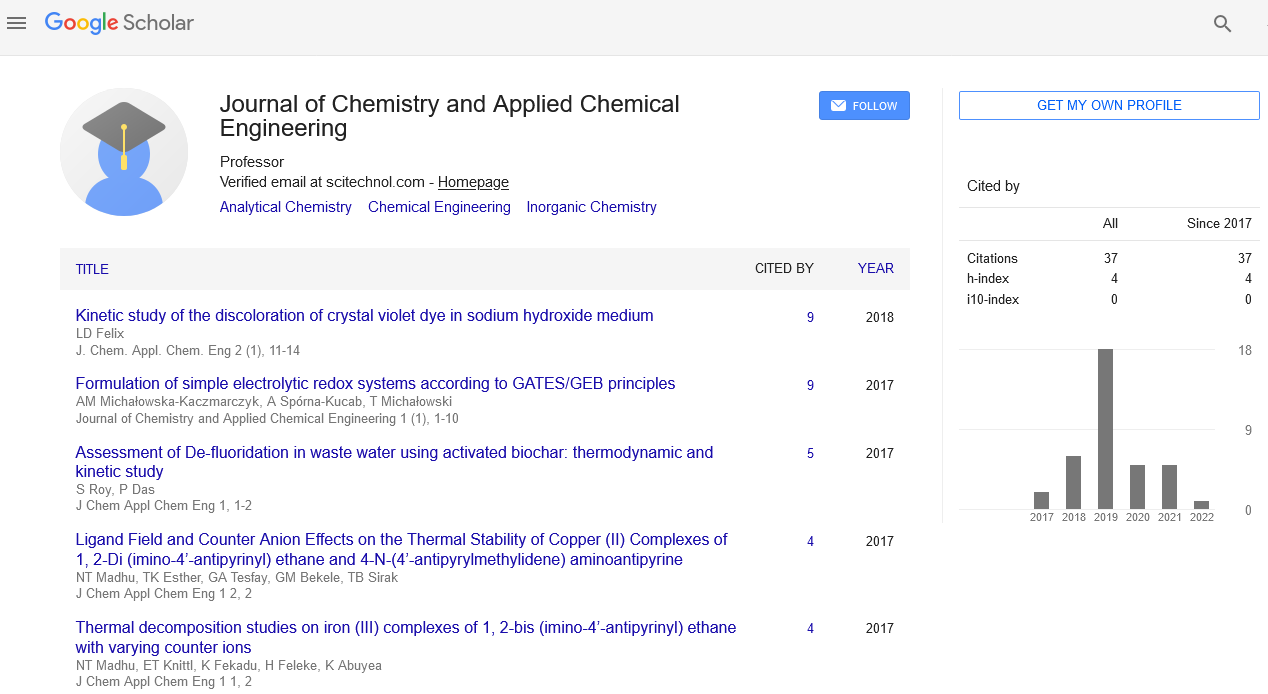Perspective, J Chem Appl Chem Eng Vol: 6 Issue: 2
Knowledge Organization Systems for Systematic Chemical Assessments
Michelle Angrish
Department of Chemical Pollutant Assessment Division, Center for Public Health and Environmental Assessment, U.S. Environmental Protection Agency (U.S. EPA), Washington, DC, USA.
*Corresponding Author: Dr. Michelle Angrish, Department of Chemical Pollutant Assessment Division, Center for Public Health and Environmental Assessment, U.S. Environmental Protection Agency (U.S. EPA), Washington, DC, USA, E-mail: angrish.michelle@epa.gov
Received date: 07 March, 2022, Manuscript No. JCACE-22-56443;
Editor assigned date: 10 March, 2022, PreQC No. JCACE-22-56443 (PQ);
Reviewed date: 14 March, 2022, QC No. JCACE-22-56443;
Revised date: 18 March, 2022, Manuscript No. JCACE-22-56443 (R);
Published date: 29 March, 2022, DOI: 10.4172/Jcace.1000e0010
Citation: Angrish M (2022) Knowledge Organization Systems for Systematic Chemical Assessments. J Chem Appl Chem Eng 6:2.
Keywords: Mapping techniques , Consequences, Ontologies, Reproducible
Introduction
Although the implementation of systematic evaluate and proof mapping techniques stands to enhance the transparency and accuracy of chemical tests, in addition they intensify the demanding situations that assessors face in making sure they've placed and blanketed all of the proof this is applicable to comparing the capability fitness consequences an publicity is probably causing. This task of records retrieval may be characterised in phrases of “semantic” and “conceptual” elements that render chemical tests at risk of the streetlight impact. This remark provides how managed vocabularies, thesauruses, and ontologies make contributions to overcoming the streetlight impact in records retrieval, making up the important thing additives of Knowledge Organization Systems (KOSs) that allow greater systematic get entry to to evaluation-applicable records than is presently achievable. The idea of Adverse Outcome Pathways is used to demonstrate what a trendy KOS to be used in chemical evaluation ought to appearance like.
Ontologies
Ontologies are an underexploited detail of powerful know-how enterprise withinside the environmental fitness sciences. Agreeing on and imposing ontologies in chemical evaluation is a complicated however tractable procedure with 4 essential steps. Successful implementation of ontologies might now no longer simplest make presently fragmented records approximately fitness dangers from chemical exposures hugely greater accessible, it can in the end allow computational techniques for chemical evaluation that may take gain of the overall richness of facts defined in herbal language in number one studies. Chemical evaluation has visible full-size development withinside the validity and software of its outputs over the previous few decades, in parallel with the advent of an growing type of open-supply and on-line equipment and sources that facilitate communication, flexibility, get entry to to records, and inclusiveness of scope. However, similarly profits withinside the first-class and inclusivity of chemical evaluation are being challenged via way of means of exponential increase withinside the quantity of threat-applicable studies being posted and a burgeoning array of progressive examine designs being advanced via way of means of scientists for investigating fitness dangers from chemical exposures. All this facts needs to be found, assembled into logical cause–impact frameworks, and evaluated as to what all of it manner for fitness dangers from chemical exposures. Continued development of chemical evaluation outputs consequently hinges at the improvement of recent techniques for facts acquisition, and the speedy, reproducible, and reusable identity of vintage and new medical records.
In parallel to the growing diversity, quantity, and complexity of toxicological studies has been the improvement of systematic techniques for reviewing and mapping proof applicable to assessing fitness dangers posed via way of means of publicity to chemical substances. Although systematic techniques enhance the transparency and accuracy of chemical evaluation products, in addition they intensify the task of locating, comparing, and integrating the various varieties of examine layout that offer proof for the fitness consequences that an publicity is probably causing. This remark presents a top level view of systematic techniques for literature-primarily based totally chemical tests, provides the authors’ perspectives of the demanding situations that present day processes to reporting and organizing toxicological studies gift to its systematic aggregation and analysis, and makes a chain of guidelines for growing trendy “know-how enterprise systems” for environmental fitness, all of which might allow greater complete software of systematic techniques for assessing fitness dangers posed via way of means of publicity to chemical substances.
Systematic Reviews
systematic evaluate (SR) has historically been described as “tries to identify, appraise and synthesize all of the empirical proof that meets prespecified eligibility standards to reply a particular studies question” and use “explicit, systematic techniques which are decided on with a view geared toward minimizing bias”. We choose defining it as a method for checking out a studies speculation the usage of current proof that employs strategies supposed to reduce random and systematic blunders and maximize transparency of decision-making. Either way, SR breaks the proof evaluation procedure down into discrete steps of specifying targets, defining seek techniques and eligibility standards, appraising the validity of every character blanketed examine, synthesizing the proof the usage of quantitative and narrative strategies as appropriate, and assessing reality withinside the effects of the synthesis. Each step is very well documented so the reader can determine the validity of every judgement being made via way of means of the reviewers as they pass from pointing out their studies goal thru to supplying their very last conclusions. Although there had been numerous ancient precursors to the approach, SR techniques as presently identified have been first officially added withinside the fitness care and social sciences withinside the overdue Eighties and early 1990s. Since then, SR has emerge as a essential method for comparing current proof of the efficacy of interventions in fitness care, education, crook justice, and different fields.
 Spanish
Spanish  Chinese
Chinese  Russian
Russian  German
German  French
French  Japanese
Japanese  Portuguese
Portuguese  Hindi
Hindi 